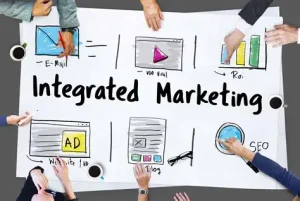Travel has long been one of the most enriching experiences a person can enjoy, offering a unique combination of adventure, relaxation, cultural exploration, and personal growth. Whether you are seeking thrilling outdoor activities, serene environments to unwind, or a mix of both, choosing the right travel destination can make all the difference.
Modern travelers increasingly look for experiences that balance excitement with comfort, allowing them to recharge while engaging in memorable activities. Exploring diverse locations that cater to both adventure and relaxation ensures a fulfilling journey that leaves a lasting impression. Check out www.roamtravelco.com to choose your next destination.

One of the most appealing aspects of adventure travel is the opportunity to step out of everyday routines and engage with nature in exciting and often challenging ways. Destinations that offer adventurous experiences can include outdoor activities such as hiking through scenic landscapes, exploring mountainous terrains, kayaking along rivers, or cycling through rugged trails. These experiences not only provide physical exercise but also foster a sense of accomplishment and connection with the natural world. Traveling to areas rich in adventure allows visitors to explore new environments, test their limits, and create memories that are both exhilarating and transformative.
In contrast, relaxation-focused travel emphasizes unwinding, reducing stress, and enjoying a peaceful environment. Such destinations often feature serene landscapes, tranquil beaches, soothing spa experiences, or quiet retreats nestled in nature. Relaxation travel allows individuals to disconnect from the demands of daily life and recharge their mental and emotional energy. A well-balanced trip often includes a combination of adventure and relaxation, ensuring that travelers can enjoy physical activity and excitement while also taking time to rejuvenate. This approach provides a holistic travel experience that benefits both body and mind.
For those seeking adventure, destinations with diverse natural landscapes are particularly appealing. Mountains, forests, deserts, and coastal regions offer countless opportunities for exploration and outdoor activities. Travelers can embark on guided treks, wildlife spotting excursions, or water-based adventures, all of which combine excitement with an appreciation for nature. Engaging in these activities fosters personal growth, improves physical health, and allows travelers to witness breathtaking scenery that is often inaccessible in urban settings. Adventure travel in natural environments provides an unmatched sense of freedom, discovery, and connection with the world.
Relaxation-focused travelers, on the other hand, are drawn to destinations that provide comfort, tranquility, and scenic beauty. Coastal areas with gentle waves, quiet lakeside retreats, or lush gardens offer spaces where travelers can rest, meditate, or enjoy leisurely activities. Wellness tourism, including spa treatments, yoga retreats, and meditation sessions, is an increasingly popular form of relaxation travel. These experiences promote mental clarity, reduce stress, and contribute to overall well-being. By selecting destinations that prioritize comfort and peace, travelers can balance the intensity of adventure with restorative experiences that rejuvenate the mind and body.
Combining adventure and relaxation in one trip provides a unique and memorable experience. Many travelers prefer destinations where they can participate in thrilling activities during the day and unwind in serene surroundings in the evening. For example, after an adventurous hike or water activity, a traveler may enjoy a quiet moment in a natural hot spring, a lakeside deck, or a peaceful garden setting. This balance allows travelers to enjoy physical challenges while also experiencing emotional and mental renewal, creating a travel experience that is both exciting and restorative.
Cultural experiences are another key element of travel that can enhance both adventure and relaxation. Immersing oneself in local customs, traditions, and cuisines adds depth to any trip, allowing travelers to understand the world from different perspectives. Participating in cultural tours, attending traditional performances, or sampling local foods can be both stimulating and enjoyable. These experiences often provide a sense of adventure through exploration while offering relaxation through immersive, leisurely activities that engage the senses and create lasting memories.
When planning a travel adventure, it is essential to consider factors such as accessibility, accommodations, and available activities. Well-planned destinations offer a range of options for adventure seekers and relaxation enthusiasts alike. Accommodations may include luxury resorts, cozy lodges, boutique hotels, or wellness retreats, catering to diverse preferences and budgets. Adventure activities are often complemented by opportunities for relaxation, such as spas, private gardens, or quiet beachfronts. By selecting destinations with a well-rounded offering, travelers can enjoy a seamless blend of excitement and comfort throughout their journey.
Safety is another crucial consideration for both adventure and relaxation travel. Engaging in adventurous activities may involve certain risks, including physical exertion, outdoor hazards, or unfamiliar environments. Choosing destinations with professional guides, well-maintained trails, and organized tours ensures a safer and more enjoyable experience. Similarly, relaxation-focused travel benefits from safe and secure environments, allowing travelers to unwind without worry. Prioritizing safety in travel planning ensures that every aspect of the trip, from adventure activities to serene retreats, can be enjoyed fully and confidently.
Sustainable travel practices are becoming increasingly important for modern travelers. Responsible travel involves minimizing environmental impact, supporting local communities, and preserving natural and cultural resources. Adventure and relaxation destinations that embrace sustainable tourism principles provide opportunities to explore and unwind while respecting the environment. Activities such as guided eco-tours, wildlife conservation programs, and environmentally conscious accommodations allow travelers to engage in meaningful experiences that benefit both themselves and the destination. Sustainable travel enhances the sense of fulfillment and responsibility that comes from exploring the world ethically and consciously.
Two important factors to consider when choosing travel destinations for both adventure and relaxation are:
- Range of Activities Offered: Look for destinations that provide diverse opportunities for physical adventure, cultural exploration, and leisure. A well-rounded selection ensures a fulfilling experience for all travelers.
- Quality of Accommodation and Amenities: Comfortable lodging and thoughtful amenities enhance the overall experience, allowing travelers to relax after adventurous activities and enjoy the journey to the fullest.
By considering these factors, travelers can select destinations that provide both excitement and comfort, creating a balanced and enjoyable travel experience.
Adventure travel is particularly rewarding when it includes immersive experiences that challenge the mind and body. Activities such as rock climbing, kayaking, zip-lining, and trekking through remote landscapes offer both physical challenges and opportunities for personal growth. These experiences often lead to a sense of accomplishment and empowerment, boosting confidence and creating lasting memories. For many travelers, the thrill of adventure combined with exposure to natural beauty is one of the most fulfilling aspects of travel.
Relaxation travel, in contrast, emphasizes slowing down and reconnecting with oneself. Spending time in quiet natural environments, participating in wellness programs, or enjoying leisurely meals allows travelers to recharge and gain mental clarity. These experiences reduce stress, improve overall health, and provide a restorative break from the demands of daily life. By intentionally including relaxation in a travel itinerary, individuals can enhance the overall quality of their journey and return home feeling refreshed and renewed.
Adventure and relaxation travel can also be family-friendly or suitable for solo travelers. Family-oriented destinations often provide a combination of safe adventure activities and comfortable relaxation areas, allowing every member of the family to enjoy the trip. Solo travelers may seek destinations that balance adventurous excursions with opportunities for introspection and personal growth. No matter the travel style, destinations that offer both adventure and relaxation provide versatile experiences that cater to diverse preferences and needs.
Planning a successful travel experience requires careful consideration of timing, climate, and seasonality. Weather conditions can significantly impact the enjoyment of both adventure and relaxation activities. Choosing the right season ensures optimal conditions for outdoor adventures while maximizing the potential for peaceful, restorative experiences. Planning also allows travelers to secure accommodations, guided tours, and special experiences that enhance both the thrill of exploration and the comfort of relaxation.
In conclusion, selecting travel destinations that offer both adventure and relaxation allows for a well-rounded, memorable experience. Whether engaging in outdoor activities, exploring cultural heritage, or unwinding in tranquil environments, travelers can enjoy a harmonious blend of excitement and serenity. By prioritizing destinations that offer diverse activities, quality accommodations, safety, and sustainable practices, travelers create journeys that are not only enjoyable but also meaningful and enriching.
Key advantages of choosing destinations that balance adventure and relaxation include:
- Physical and Mental Enrichment: Adventure activities challenge the body, while relaxation experiences restore the mind.
- Memorable and Unique Experiences: Combining exploration with tranquility creates lasting memories and personal growth.
- Enhanced Enjoyment and Well-Being: Balanced itineraries ensure travelers can enjoy both excitement and restoration without feeling overwhelmed.
- Sustainable and Responsible Travel: Engaging in environmentally conscious activities and accommodations preserves destinations for future travelers.
By carefully planning and selecting destinations that cater to both adventure and relaxation, travelers can embark on journeys that are fulfilling, rejuvenating, and unforgettable. Balancing excitement with serenity ensures that every trip is not only a break from routine but also an opportunity to discover new places, challenge personal limits, and return home with a renewed sense of wonder and well-being.


